Carved stone figures
Note to the reader: Readers of Aboriginal and Torres Strait Islander descent, please be aware that this resource contains images of Aboriginal people who have died.
What are the carved stone figures?

On the walls of the Australian War Memorial’s Commemorative Area are 26 carved stone figures. Two of these, located at the northern end of the courtyard, show the faces of an Aboriginal Australian man and an Aboriginal Australian woman. The other 24 depict animals that are native to Australia. Each of the states and territories are represented in the selection of figures. The carved stone figures were made from white (Wondabyne) sandstone from the Hawkesbury Quarry in New South Wales. These carvings are the only works of art in the Memorial that do not relate directly to war service. Originally all of the carved stone figures had drainage functionality and were known as gargoyles. Today, 24 of them still have this functionality and are still known by this term. The other two, the Aboriginal male and Aboriginal female do not have drainage functionality and are therefore known as "architectural bosses".
The original 26 carved stone figures are identified below.

Leslie Bowles, Aboriginal (female) (1940–41, Wondabyne sandstone, 30 x 30 x 18 cm, ART93053)

Leslie Bowles, Kangaroo, (1940–41, Wondabyne sandstone, 30 x 30 x 18 cm, ART93052)

Leslie Bowles, Wombat, (1940–41, Wondabyne sandstone, 30 x 30 x 18 cm, ART93051)

Leslie Bowles, Bush turkey, (1940–41, Wondabyne sandstone, 30 x 30 x 18 cm, ART93050)

Leslie Bowles, Frog, (1940–41, Wondabyne sandstone, 30 x 30 x 18 cm, ART93049)

Leslie Bowles, Tasmanian devil, (1940–41, Wondabyne sandstone, 30 x 30 x 18 cm, ART93048)

Leslie Bowles, Cockatoo, (1940–41, Wondabyne sandstone, 30 x 30 x 18 cm, ART93047)

Leslie Bowles, Mopoke, (1940–41, Wondabyne sandstone, 30 x 30 x 18 cm, ART93046)
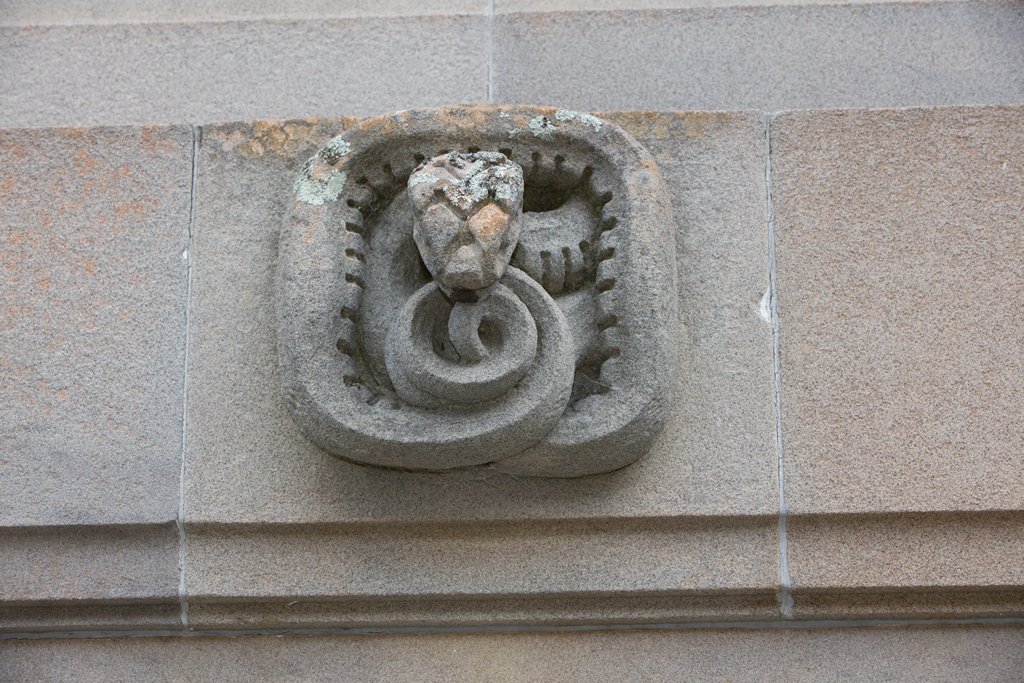
Leslie Bowles, Carpet snake, (1940–41, Wondabyne sandstone, 30 x 30 x 18 cm, ART93045)

Leslie Bowles, Kookaburra, (1940–41, Wondabyne sandstone, 30 x 30 x 18 cm, ART93056)

Leslie Bowles, Bearded dragon, (1940–41, Wondabyne sandstone, 30 x 30 x 18 cm, ART93044)

Leslie Bowles, Dingo, (1940–41, Wondabyne sandstone, 30 x 30 x 18 cm, ART93042)

Leslie Bowles, Gurnet, (1940–41, Wondabyne sandstone, 30 x 30 x 18 cm, ART93041)

Leslie Bowles, Aboriginal (male) (1940–41, Wondabyne sandstone, 30 x 30 x 18 cm, ART93066)

Leslie Bowles, Emu, (1940–41, Wondabyne sandstone, 30 x 30 x 18 cm, ART93065)

Leslie Bowles, Koala,(1940–41, Wondabyne sandstone, 30 x 30 x 18 cm, ART93064)

Leslie Bowles, Platypus, (1940–41, Wondabyne sandstone, 30 x 30 x 18 cm, ART93063)
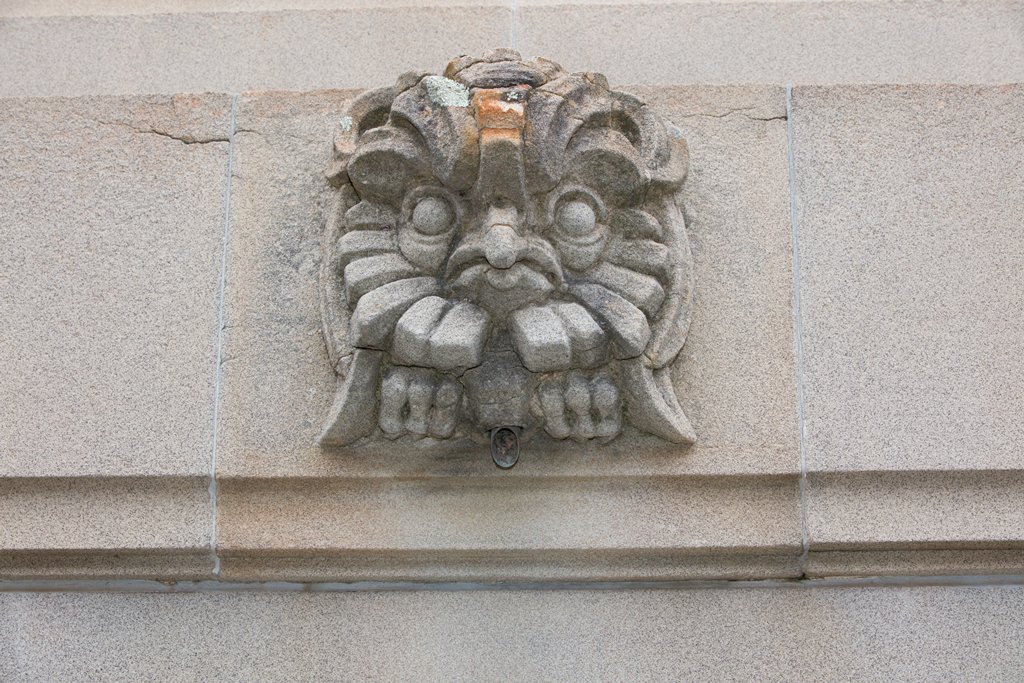
Leslie Bowles, Frogmouth owl, (1940–41, Wondabyne sandstone, 30 x 30 x 18 cm, ART93062)

Leslie Bowles, Cuscus (marsupial), (1940–41, Wondabyne sandstone, 30 x 30 x 18 cm, ART93061)

Leslie Bowles, Swan, (1940–41, Wondabyne sandstone, 30 x 30 x 18 cm, ART93060)
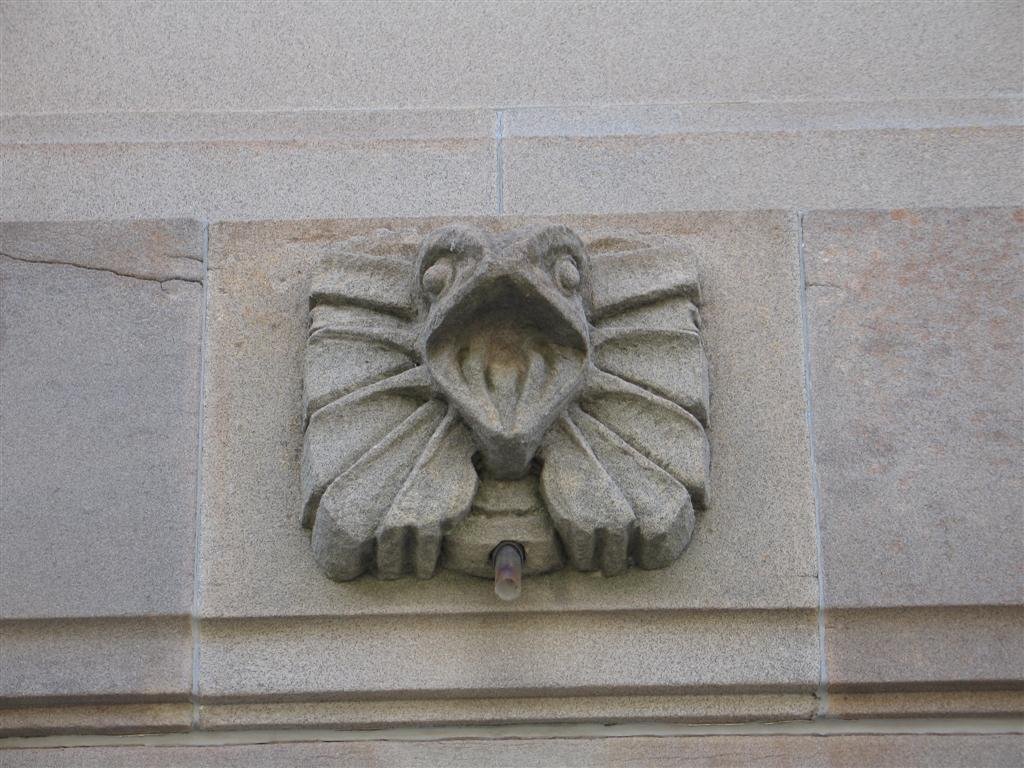
Leslie Bowles, Frilled lizard, (1940–41, Wondabyne sandstone, 30 x 30 x 18 cm, ART93059)

Leslie Bowles, Cassowary, (1940–41, Wondabyne sandstone, 30 x 30 x 18 cm, ART93058)

Leslie Bowles, Mountain devil, (1940–41, Wondabyne sandstone, 30 x 30 x 18 cm, ART93057)

Leslie Bowles, Eagle, 1940–41, Wondabyne sandstone, 30 x 30 x 18 cm, ART93043)

Leslie Bowles, Opossum, (1940–41, Wondabyne sandstone, 30 x 30 x 18 cm, ART93055)

Leslie Bowles, Goanna, (1940–41, Wondabyne sandstone, 30 x 30 x 18 cm, ART93054)
Did you know?
In 1941 the 26 carved stone figures cost the Memorial a total of £312. Today that would be equal to approximately $26,349.
Who designed and made the figures?
Australian sculptor Leslie Bowles designed and modelled the carved stone figures in 1940–41, with the help of fellow sculptor Ray Ewers. These models (known as maquettes) were then used to construct the carvings from stone in-situ by stonemason Mr W. Swan. The maquettes have been kept in the Memorial’s collection and are considered works of art in their own right.
While Bowles’ specific artistic intentions for the carved figures have never been clear, he did express his desire to use subjects that he felt at the time were particularly Australian. In a letter to the Memorial on 18 March 1940, reporting on his progress, he noted:
As every gargoyle is different and represents an Australian animal, reptile or bird, or other life of Australia, this part takes some research and designing.” (AWM315 234/002/032)
Who was Leslie Bowles?
William Leslie Bowles was born in Sydney in 1855. He studied modelling and woodcarving at Brisbane Technical College, and travelled to England in 1910 after winning a scholarship. Bowles served in the 25th London Regiment and Royal Tank Corps during the First World War.
Returning to Australia in 1924, Bowles was employed by the Australian War Memorial to execute several works of art, including dioramas and sculptures, and to design the carved stone figures for the Commemorative Area.
Throughout the 1930s and 1940s Bowles was known to use sculpture exclusively, hoping to expand civic and national pride and myth-making.
Bowles died in 1954.
Private Leslie Bowles (left) performs messenger duties in France during the First World War.
How do the carved figures fit with the architecture of the Commemorative Area?
Charles Bean was Australia’s official war correspondent during the First World War and founder of the Australian War Memorial. He envisioned the Commemorative Area as a tribute to the men and women who had died serving their country.
The Australian War Memorial building was a combination of two different designs from Sydney architects Emil Sodersteen and John Crust. Their vision for the Commemorative Area (originally named the Court of Honour) was as a space to prepare visitors for entry to the Memorial’s solemn place, the Hall of Memory.
The Commemorative Area was envisaged by Crust as an open-air space with the names of Australians who had died in war inscribed on the walls of the cloisters. The design would maximise light, while allowing visitors to view the Roll of Honour from a distance.
The carved figures were an important feature of Crust’s original design. The modern art deco style and sandstone material were believed to reference “the monumentality and longevity suggested by Egyptian architecture” (Heritage Management Plan, p. 15).
Being open to the weather, the cloisters required multiple drainage points. As a solution, they decided that the carved figures could be fitted with drainage holes, and were therefore referred to as gargoyles, in a decorative yet symbolic approach to solving a practical problem.
Emil Sodersteen’s designs for the first floor cloister level of the Commemorative Area, 1938.
The hole in the mouth of this bearded dragon plaster model allows for a water spout. The drainage holes were drilled through the squared blocks as they were placed in the wall of the Commemorative Area. Some of the drainage points in the final sculptures varied from Bowles’s models according to practical use.
Did you know?
A competition for the design of the Australian War Memorial was conducted in 1925–26. None of the entries received met all of the competition’s conditions and no winner was announced.
Two of the competitors, Emil Sodersteen and John Crust, were subsequently asked to develop a new collaborative design incorporating the architectural style of Sodersteen and the innovative and cost-cutting approach of Crust.
The joint design was completed in 1927. The architectural style was primarily Sodersteen’s, and drew upon the then recent development of the European art deco style.
This architectural styling became popular in Canberra in the postwar period, influencing buildings such as the Institute of Anatomy (now the National Film and Sound Archives), built in 1928–30.
Reconstruction and replacement of the carved stone figures
The drainage points in the carved stone figures did not function properly, and leaking meant the sandstone was saturated. This, along with exposure to the weather, resulted in deterioration of the stone, which cracked and broke away. The condition of the figures and surrounding stone work was closely monitored from 1990, and in 2014 it was decided that replacement was necessary. Some of the reasons given for this decision were:
- to restore the appearance, historical integrity, and functionality of the Commemorative Area;
- to conserve these important works of art;
- to improve visitor safety (some of the figures were located above public staircases and some of the jointing material contained asbestos); and
- to improve drainage from the cloisters.
The plan was to:
- remove the existing carved stone figures and surrounding stone;
- create new carved stone figures;
- insert the new figures in the original design, integrating a drainage system from the cloisters;
- replace deteriorated stone work; and
- replace asbestos jointing with a lime putty.
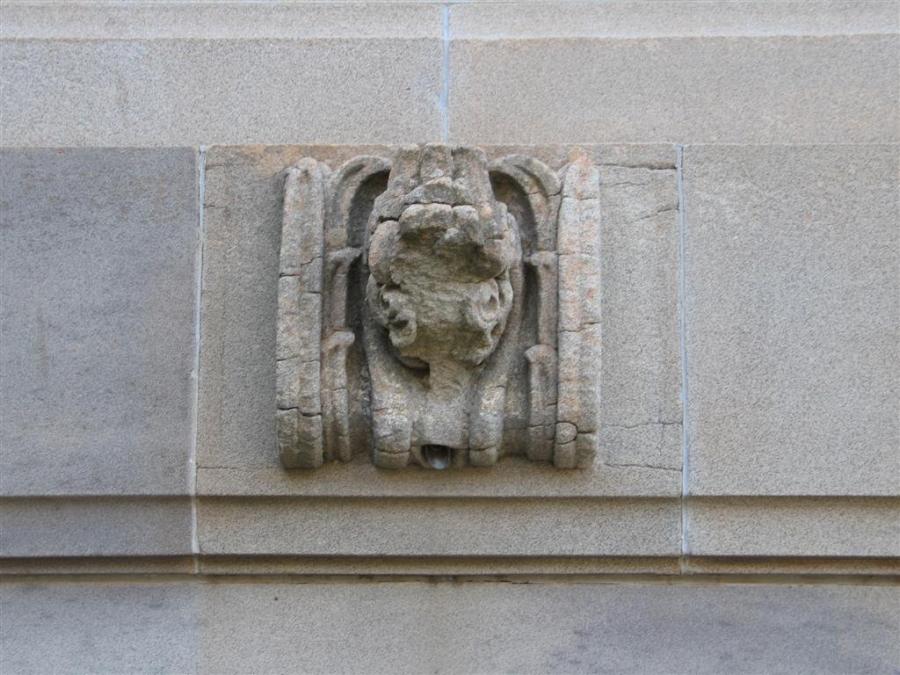
The most damaged original carved stone figure: the emu. (ART93065)

The re-carved stone figure of the emu, 2016. (AWM2016.60.15)
Considerations and consultation
Before beginning the reconstruction project, a number of considerations were raised:
1. Heritage
The Australian War Memorial is a heritage building. The Commonwealth’s Environment Protection and Biodiversity Conservation Act 1999 defines heritage principles that agencies must follow and directs agencies to create documents for guiding their care of heritage places. When any new work is planned for the site, the Australian War Memorial’s Conservation Management Plan (CMP), as well as the Heritage Management Strategy and the Heritage Management Plan (HMP), must be consulted. The HMP acts as a practical guide for conserving, managing, and interpreting the heritage, history, and values of the site. It notes that the Commemorative Area is a space which “embodies the key heritage attributes of the [Memorial] and also possesses a low tolerance for change”. Therefore, any reconstruction “must contribute to the heritage values of the place in a meaningful way and must be of a high quality, sympathetic design” (p. 44).
According to 1995’s CMP (section 6, p. 89), “reconstruction means returning a place as nearly as possible to a known earlier state and is distinguished by the introduction of materials (new or old) into the fabric”. When planning the reconstruction of the carved figures, policy 26 of this plan (p. 106) was consulted. It specifies that a team must:
conserve by preservation or reconstruction the gargoyles in the courtyard, taking into account the need to ensure effective dispersal of rainwater; where possible use skills associated with or familiar with the original work and style of stone construction and carving; apply existing conservation and curatorial procedures when dealing with items of heritage artistic significance removed from their locations.
These considerations were taken into account when planning and implementing the project, particularly the selection of the stone masonry company that would create the finished products. The Traditional Restoration Company was selected to construct the 26 carved stone figures and surrounding stone. They used traditional carving techniques, including hand finishing, which complemented the original sculptural style. To showcase these techniques and to replicate the way in which the originals were made, the company produced the figures on site, in a location visible to the public.

The Traditional Restoration Company working on a carving reconstruction.
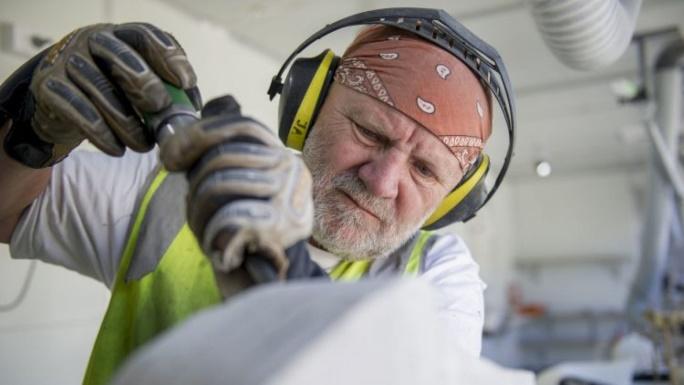
The Traditional Restoration Company working on a carving reconstruction.
As one of the primary functions of the Memorial is commemoration, it was important that the reconstruction project did not disrupt visitation of and ceremonies in the Commemorative Area. To ensure visitors could continue to access the courtyard and the Roll of Honour, one side of the carved stone figures was completed and installed at a time.
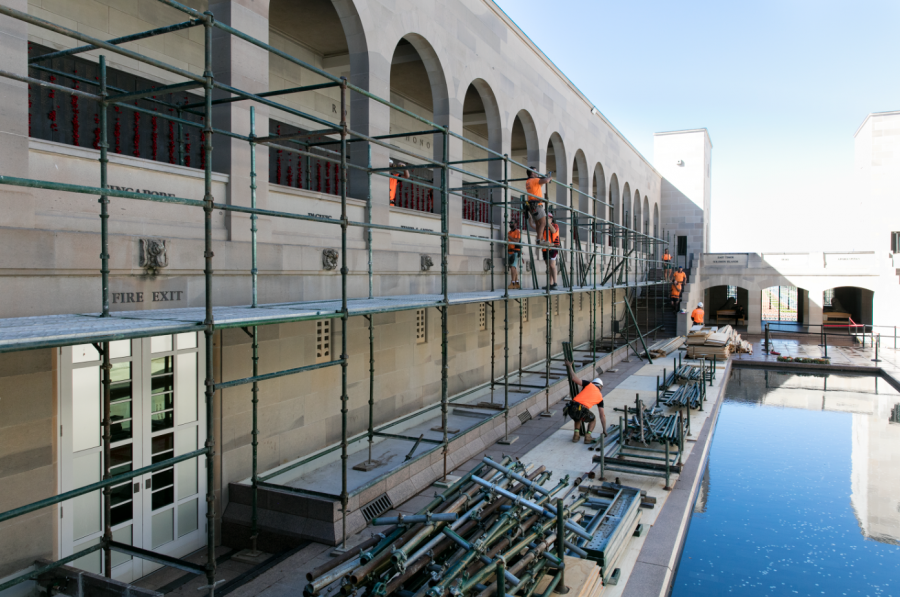
Reconstruction of the Commemorative Area, December 2016. (AWM2017.4.75.26)
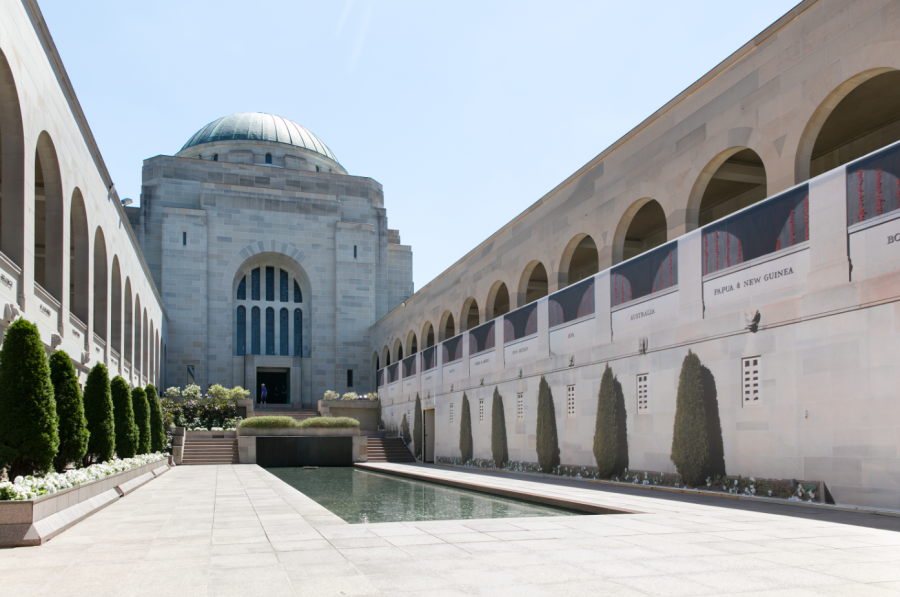
To retain the appearance of the Commemorative Area throughout the reconstruction, a facsimile of the stone walls was erected over the works. (AWM2017.4.75.68)
2. Aboriginal carved stone figures
Two of the 26 carved stone figures, located closest to the Hall of Memory, are of an Aboriginal man and Aboriginal woman. It is largely unknown what Bowles’ original artistic intentions were for these figures, other than wanting to depict a uniquely Australian iconography.
It is likely that Bowles used known images of Aboriginal people that were available at the time to inform his designs of the carved figures.
Leslie Bowles, Aboriginal (female) (1940–41, Wondabyne sandstone, 30 x 30 x 18 cm)
Leslie Bowles, Aboriginal (male) (1940–41, Wondabyne sandstone, 30 x 30 x 18 cm)
While Bowles’ Aboriginal carved stone figures bear a likeness to images available at the time, it is believed that Bowles’s Aboriginal carved stone figures are meant to represent Aboriginal people generally, rather than being portraits of known individuals.
Perspectives on the Aboriginal carved stone figures
Since their installation, the sculptures of the Aboriginal man and Aboriginal woman have taken on a variety of meanings for different members of the community. To ensure that these sculptures were treated respectfully during the restoration project, the Memorial consulted with members of Aboriginal and Torres Strait Islander communities.
The following groups were consulted: Memorial Indigenous Liaison Officers, national veterans’ and defence groups including the Aboriginal and Torres Strait Islander Veterans and Services Association, the Returned and Services League, the Defence Aboriginal and Torres Strait Islander Network (DATSIN) and Defence Aboriginal and Torres Strait Islander program managers, the ACT Aboriginal and Torres Strait Islander Elected Body, and representatives of the local traditional custodians, the Ngunnawal people.
From the consultation, a broad range of views and opinions were expressed about the Aboriginal figures. However, two main perspectives dominated the discussion:
- In placing Aboriginal people among native fauna, this could be seen as denigrating Aboriginal people. Some saw this as inappropriately reflecting out-of-date or racist attitudes. Some with this viewpoint felt that the Aboriginal sculptures should be removed, while others thought they should be retained to show how values associated with interpreting them have changed over time.
- Aboriginal sculptures are inclusive and respectful of Aboriginal people as the first peoples of Australia and as guardians at the heart of the Memorial’s original design. Some who expressed this viewpoint saw the position of the sculptures at the head of the courtyard as demonstrating this inclusiveness and respect. Several noted that the inclusion of the representations of Aboriginal people is an important acknowledgment in a uniquely Australian place of commemoration. Those holding this opinion wanted the sculptures re-carved and returned to their original positions.
Despite these differing perspectives, it was generally agreed that:
- as the figures were part of the original design of the Commemorative Area and an integral part of the heritage of the building, removing them would not be the best outcome; and
- interpretation of the figures is personal and depends on each viewer’s perspective, and these differing views should be communicated.
As a result of this consultation it was decided that the functional use of the Aboriginal carved figures for water drainage should be abandoned to reflect the Memorial’s belief that the figures are symbolically important and uniquely worthy of respect. They were not fitted with drainage points and are therefore no longer referred to as “gargoyles” but “architectural bosses”.
Welcoming the carved stone figures
Once the new carved stone figures were installed in the Commemorative Area, a smoking ceremony was held on 29 March 2017 to welcome them into the space.
What is a smoking ceremony?
A smoking ceremony is an event in which various native plants are collected and used to produce smoke.
This smoke is believed to have cleansing properties and the ability to ward off unwanted and bad spirits, and to assure the spirits within the soil that they are welcomed. Without such a ceremony it is believed the spirits would remain restless and could bring bad omens.
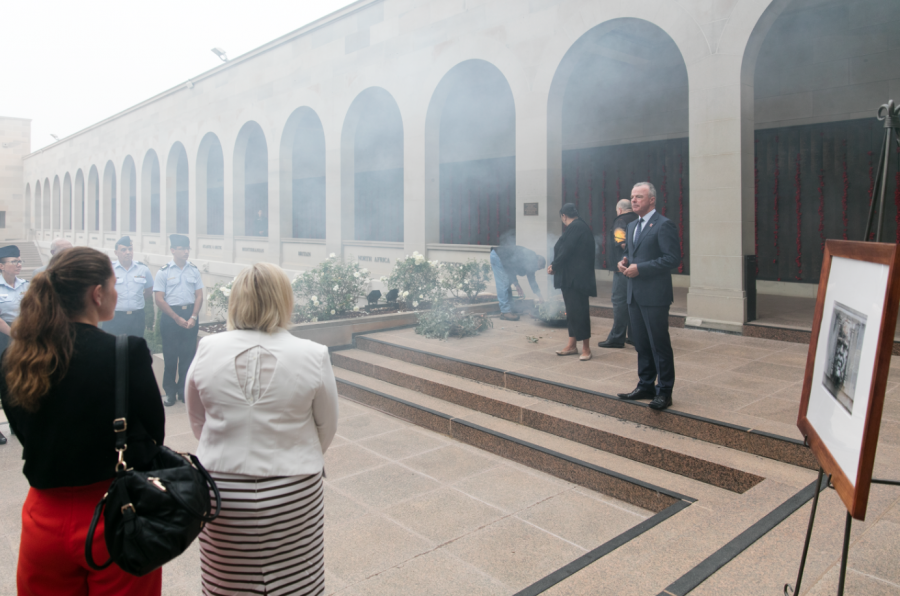
Smoking ceremony held on 29 March 2017 (AWM2017.4.66.11).
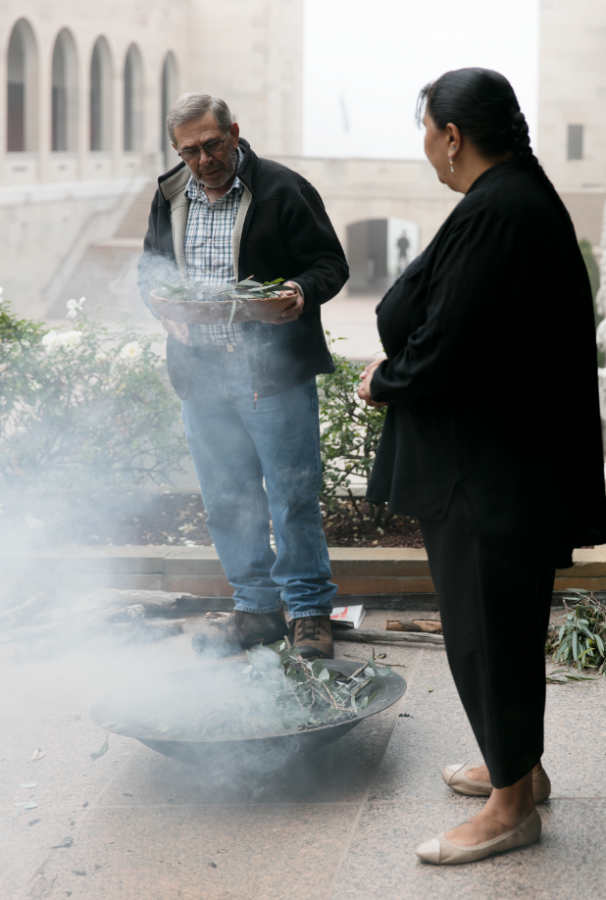
Smoking ceremony held on 29 March 2017 (AWM2017.4.66.21).
The new carved stone figures
Below are the new carved stone figures that now appear in the Memorial’s Commemorative Area (the originals remain in the Memorial’s collection).

Leslie Bowles, Indigenous female head boss, 2016. (AWM2016.60.1)

Leslie Bowles, Kangaroo, 2016. (AWM2016.60.2)

Leslie Bowles, Wombat, 2016. (AWM2016.60.3)
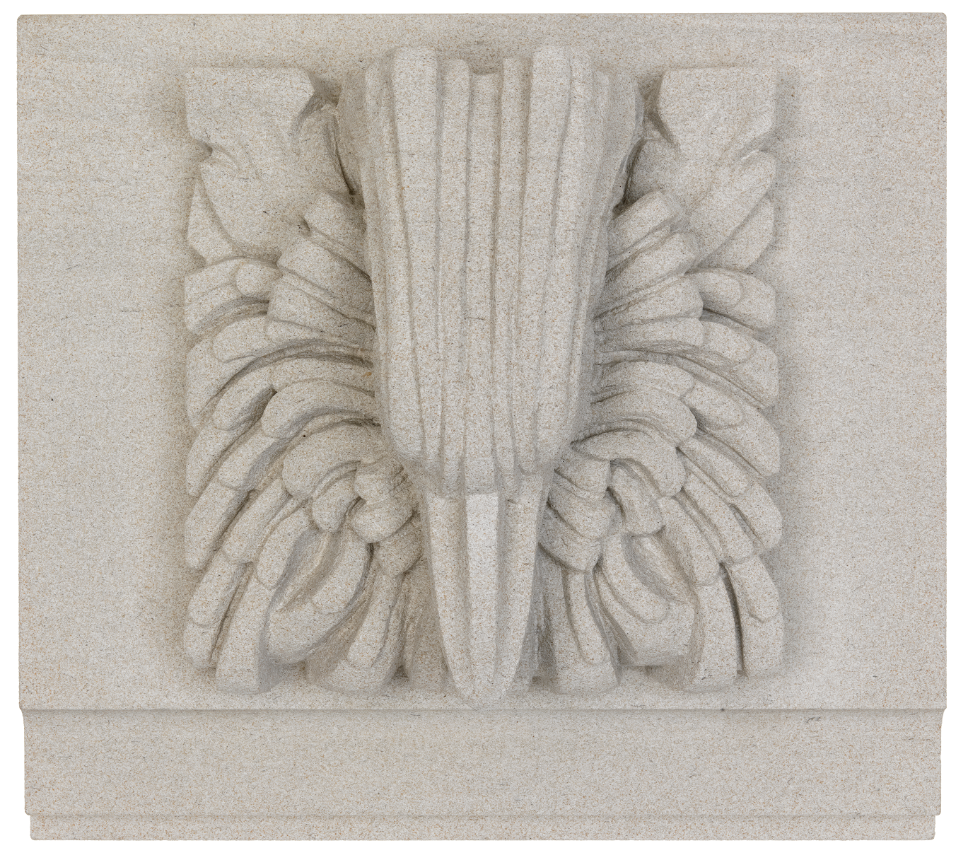
Leslie Bowles, Bush turkey, 2016.(AWM2016.60.4)

Leslie Bowles, Frog, 2016. (AWM2016.60.5)

Leslie Bowles , Tasmanian devil, 2016. (AWM2016.60.6)

Leslie Bowles, Cockatoo, 2016. (AWM2016.60.7)

Leslie Bowles, Mopoke (bird), 2016. (AWM2016.60.8)

Leslie Bowles, Carpet snake, 2016. (AWM2016.60.22)

Leslie Bowles, Kookaburra, 2016. (AWM2016.60.24)

Leslie Bowles , Bearded dragon, 2016. (AWM2016.60.10)

Leslie Bowles, Dingo, 2016. (AWM2016.60.12)
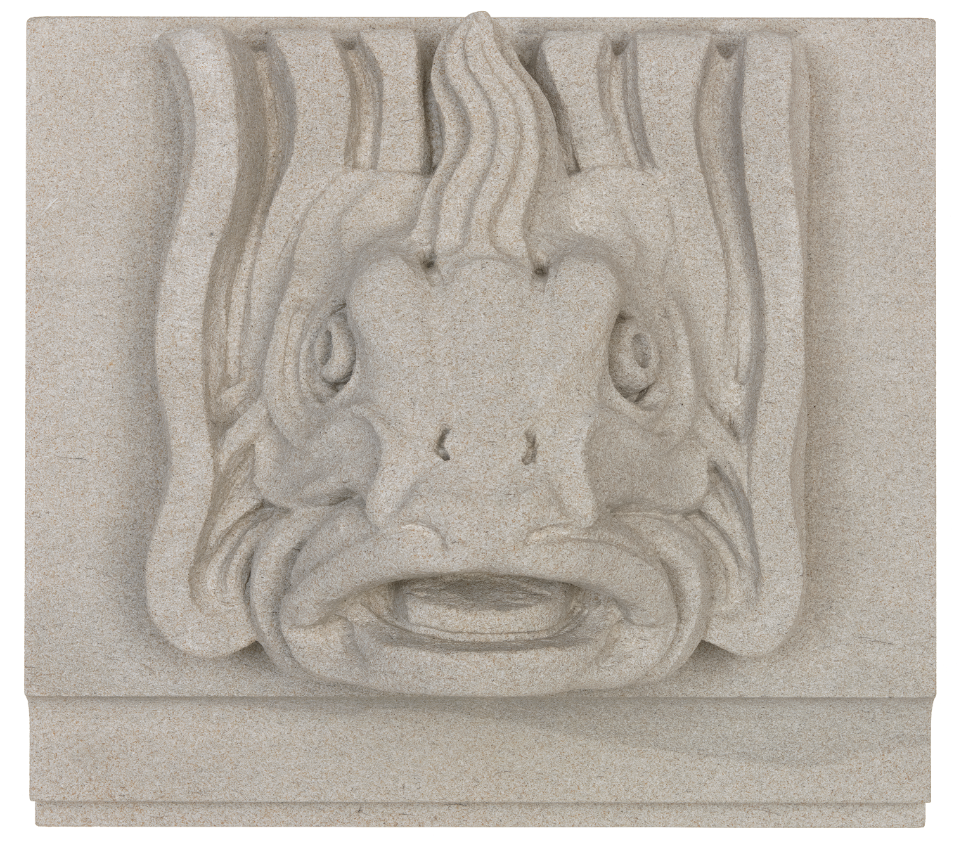
Leslie Bowles, Gurnet, 2016. (AWM2016.60.13)
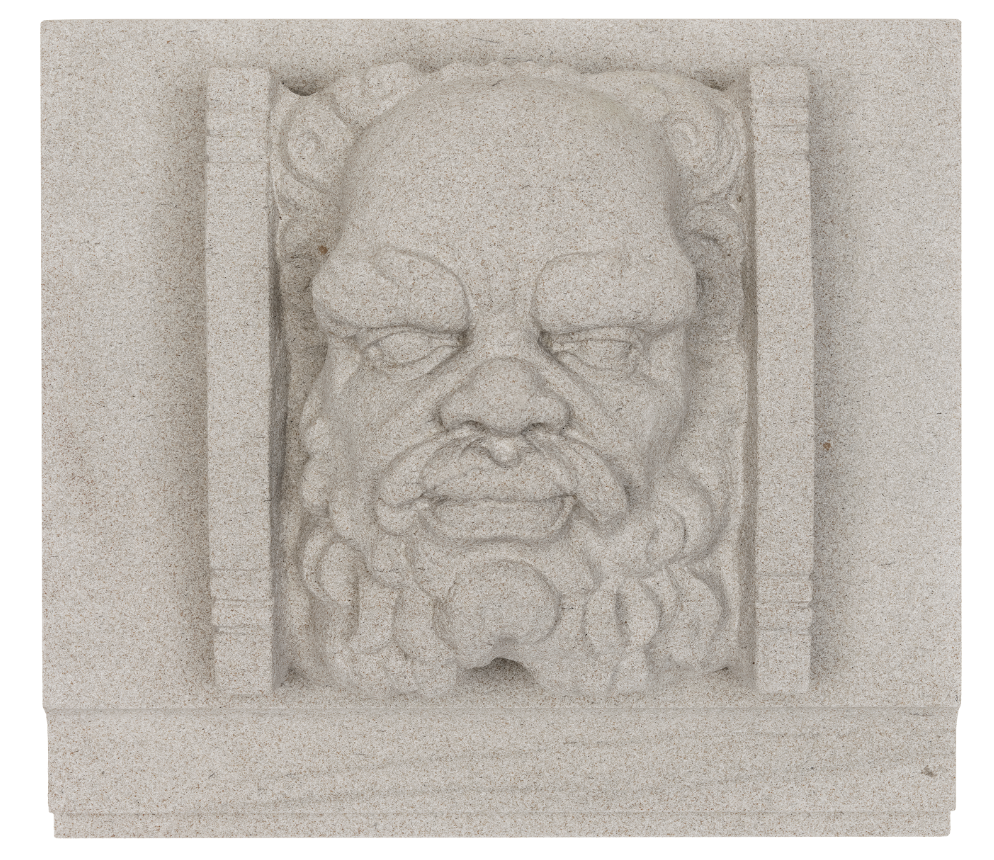
Leslie Bowles, Indigenous male boss head, 2016.(AWM2016.60.14)

Leslie Bowles, Emu, 2016. (AWM2016.60.15)

Leslie Bowles, Koala, 2016. (AWM2016.60.16)

Leslie Bowles, Platypus, 2016. (AWM2016.60.17)

Leslie Bowles, Frogmouth owl, 2016. (AWM2016.60.18)

Leslie Bowles, Cuscus, 2016. (AWM2016.60.19)

Leslie Bowles, Swan, 2016. (AWM2016.60.20)

Leslie Bowles, Frilled lizard, 2016. (AWM2016.60.21)

Leslie Bowles, Cassowary, 2016. (AWM2016.60.22)

Leslie Bowles, Mountain devil, 2016. (AWM2016.60.23)

Leslie Bowles, Eagle, 2016. (AWM2016.60.11)

Leslie Bowles, Opossum, 2016. (AWM2016.60.25)

Leslie Bowles, Goanna, 2016. (AWM2016.60.26)
The Australian War Memorial gives thanks to all those who contributed to the project, and invites all visitors to the Commemorative Area to view the new works in place.






